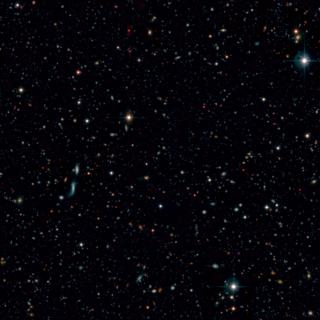Bibcode
González, J. J.; Cepa, J.; González-Serrano, J. I.; Sánchez-Portal, M.
Referencia bibliográfica
Monthly Notices of the Royal Astronomical Society, Volume 443, Issue 4, p.3289-3301
Fecha de publicación:
10
2014
Número de citas
15
Número de citas referidas
14
Descripción
Tunable filters (TFs) are a powerful way of implementing narrow-band
imaging mode over wide wavelength ranges, without the need of purchasing
a large number of narrow-band filters covering all strong emission or
absorption lines at any redshift. However, one of its main features is a
wavelength variation across the field of view, sometimes termed the
phase effect. In this work, an anomalous phase effect is reported and
characterized for the Optical System for Imaging and low Resolution
Integrated Spectroscopy (OSIRIS) instrument at the 10.4 m Gran
Telescopio Canarias. The transmitted wavelength across the field of view
of the instrument depends, not only on the distance to the optical
centre, but on wavelength. This effect is calibrated for the red TF of
OSIRIS by measuring both normal-incidence light at laboratory and
spectral lamps at the telescope at non-normal incidence. This effect can
be explained by taking into account the inner coatings of the etalon. In
a high spectral resolution etalon, the gap between plates is much larger
than the thickness of the inner reflective coatings. In the case of a
TF, like that in OSIRIS, the coatings thickness could be of the order of
the cavity, which changes drastically the effective gap of the etalon.
We show that by including thick and dispersive coatings into the
interference equations, the observed anomalous phase effect can be
perfectly reproduced. In fact, we find that, for the OSIRIS red TF, a
two-coatings model fits the data with an rms of 0.5 Å at all
wavelengths and incidence angles. This is a general physical model that
can be applied to other TF instruments.
Proyectos relacionados

Evolución de Galaxias
El estudio de la evolución de las galaxias es un tema crucial de la Astronomía Extragaláctica moderna. Permite vincular las galaxias locales con las primeras que existieron en el universo. Pero para poder abordarlo es preciso obtener censos estadísticamente significativos de galaxias de distintas luminosidades, a distintas distancias
Jorge
Cepa Nogue